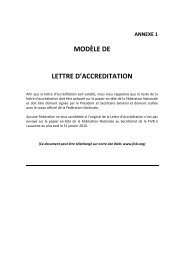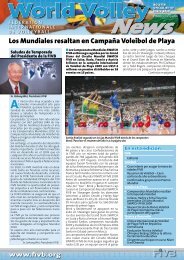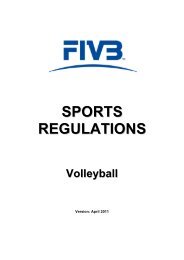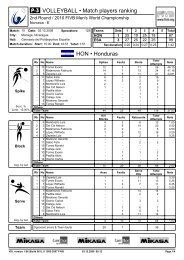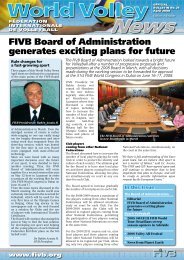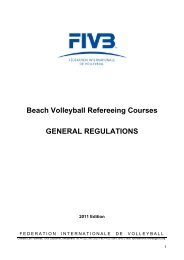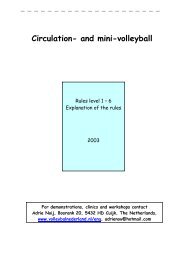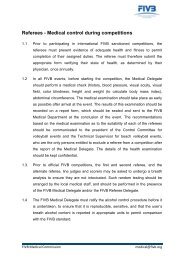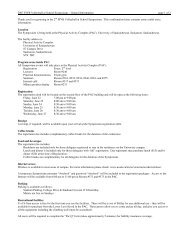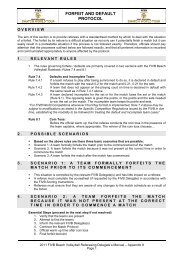MEDICAL REGULATIONS 11 Edition - FIVB
MEDICAL REGULATIONS 11 Edition - FIVB
MEDICAL REGULATIONS 11 Edition - FIVB
Create successful ePaper yourself
Turn your PDF publications into a flip-book with our unique Google optimized e-Paper software.
<strong>FIVB</strong> Medical Regulations – <strong>11</strong>th <strong>Edition</strong><br />
the National Federation have been delegated or assigned by statute or agreement to a<br />
National Anti-Doping Organization. In those countries, references in these Anti-Doping<br />
Rules to the National Federation shall apply, as appropriate, to the National Anti-Doping<br />
Organization.<br />
These Anti-Doping Rules shall apply to all Doping Controls over which the <strong>FIVB</strong> and its<br />
National Federations and Confederations have jurisdiction.<br />
ARTICLE 1<br />
DEFINITION OF DOPING<br />
Doping is defined as the occurrence of one or more of the anti-doping rule violations set<br />
forth in Article 2.1 through Article 2.8 of these Anti-Doping Rules.<br />
ARTICLE 2<br />
ANTI-DOPING RULE VIOLATIONS<br />
Athletes and other Persons shall be responsible for knowing what constitutes an antidoping<br />
rule violation and the substances and methods which have been included on the<br />
Prohibited List.<br />
The following constitute anti-doping rule violations:<br />
2.1 The presence of a Prohibited Substance or its Metabolites or<br />
Markers in an Athlete’s Sample.<br />
2.1.1 It is each Athlete’s personal duty to ensure that no Prohibited<br />
Substance enters his or her body. Athletes are responsible for any<br />
Prohibited Substance or its Metabolites or Markers found to be present<br />
in their Samples. Accordingly, it is not necessary that intent, fault,<br />
negligence or knowing Use on the Athlete’s part be demonstrated in<br />
order to establish an anti-doping violation under Article 2.1.<br />
2.1.2 Sufficient proof of an anti-doping rule violation under Article<br />
2.1 is established by either of the following: presence of a Prohibited<br />
Substance or its Metabolites or Markers in the Athlete’s A Sample<br />
where the Athlete waives analysis of the B Sample and the B Sample is<br />
not analyzed; or, where the Athlete’s B Sample is analyzed and the<br />
analysis of the Athlete’s B Sample confirms the presence of the<br />
Prohibited Substance or its Metabolites or Markers found in the<br />
Athlete’s A Sample.<br />
2.1.3 Excepting those substances for which a quantitative<br />
reporting threshold is specifically identified in the Prohibited List, the<br />
detected presence of any quantity of a Prohibited Substance or its<br />
Metabolites or Markers in an Athlete’s Sample shall constitute an antidoping<br />
rule violation.<br />
2.1.4 As an exception to the general rule of Article 2.1, the<br />
Prohibited List or International Standards may establish special criteria<br />
for the evaluation of Prohibited Substances that can also be produced<br />
endogenously.<br />
- 4 -



